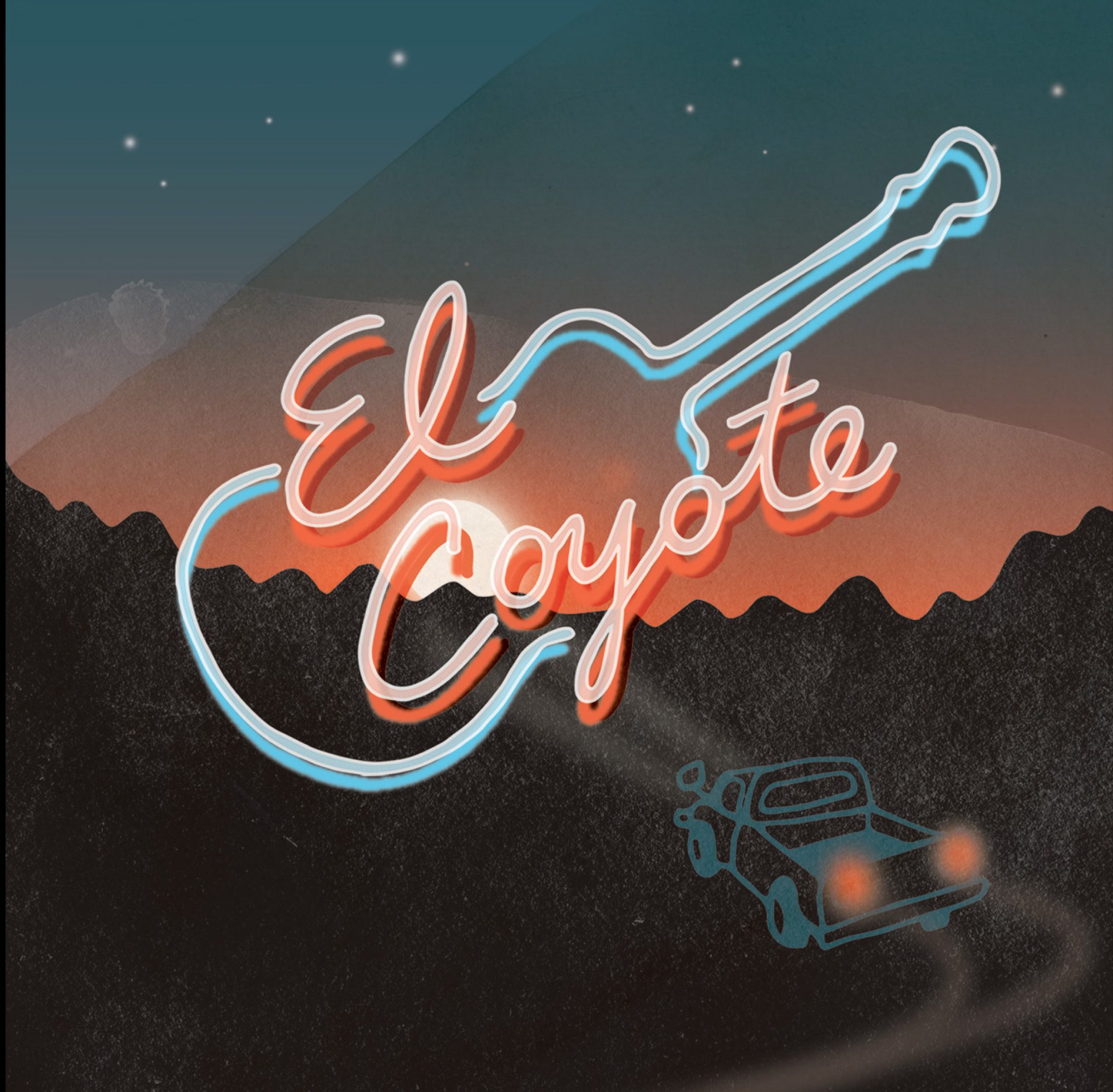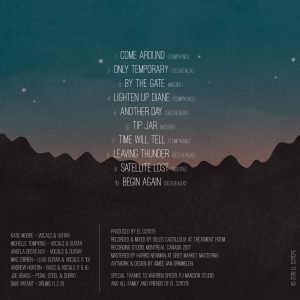Above photo by Caroline Desilets. Joe Grass (dobro), Andrew Horton (bass), Angela Desveaux, Katie Moore, Michelle Tompkins, Mike O’Brien (guitar).
https://www.youtube.com/watch?v=A0Ar7zLoTlw
It all started as a Friday night kitchen song-swapping session between friends to get through Montreal’s never-ending winter, and eventually led to the creation of their self-produced, self-titled album. For a first release, this alt-country-folk, Nashville influenced Canadiana band sound as if they have been playing together for years. And much of that is true. Guitarist Mike O’Brien seems to be the common thread, having worked alongside Angela Desveaux (Yonder Hill) since 2007, Katie Moore (Socalled, Yonder Hill) since 2008 and Michelle Tompkins (Sin & Swoon) since 2009. Andrew Horton (Katie Moore, Firemen, Notre Dame de Grass) is on upright bass and vocals, while Joe Grass (Patrick Watson, KLAUS) is on pedal steel and dobro. With a line up this superb, it’s only natural that they’ve created a sound that is rich and lasting, classic and most importantly, honest. With songs of small-town affairs, wayfaring love, choices and toiling away at the local grind, one would never guess that they call Montreal home. But Montreal was the perfect meeting place for these members who hail from the Okanagan Valley, Alberta, Ottawa Valley, Moncton, Antigonish and Cheticamp.
What stands out most with El Coyote is just how undemanding their sound is. Recorded and mixed by Gilles Castilloux at The Treatment Room, the songs were written by Tompkins, Desveaux and Moore, adding a natural variety uncommonly found in most releases. “By The Gate,” told through Moore’s awe- inspiring vibrato, sounds as if it could have been written somewhere on the Isle of Skye in the late 18c. Desveaux’s duet with Horton, “Another Day,” a coming to terms with the realities of commitment, evokes an intimacy with her golden voice that instantly heals upon first listen. “Lighten up Diane” opens with O’Brien’s effortless cascading guitar and features Tompkins’ trademark low alto in a sobering story of disillusionment about the loss of time you can never get back. The music’s real strength, however, lies in the harmonies, which braid effortlessly and are arranged to reflect the various moods of the album. From the catchy opening track “Come Around” to the sudden snare snap delivery by David Payant on the honky tonk “Tip Jar” to the dreamy yet driven “Leaving Thunder,” this collection of songs, along with the musicians who pay such close attention to detail, are what make this record what it is: an impressive display of a band who never over plays and serves only the song.
Tout a commencé un vendredi soir dans une cuisine où s’étaient réunis des amis pour échanger des chansons pendant que l’hiver montréalais s’éternisait. C’est au fil de ces soirées qu’a pris forme leur album éponyme autoproduit. À entendre le son de ce groupe de musique country-folk alternative et Canadiana influencée par Nashville, on pourrait croire que ses membres jouent ensemble depuis des années, bien que ce lancement soit le premier qui les réunit. Cela est en grande partie vrai : le guitariste Mike O’Brien, maillon du réseau, travaille avec Angela Desveaux (Yonder Hill) depuis 2007, avec Katie Moore (Socalled, Yonder Hill) depuis 2008 et avec Michelle Tompkins (Sin & Swoon) depuis 2009. Se joignent à eux Andrew Horton (Katie Moore, Firemen, Notre Dame de Grass) à la contrebasse et à la voix, ainsi que Joe Grass (Patrick Watson, KLAUS) au pedal steel et au dobro. Il est tout à fait naturel qu’une distribution aussi magnifique ait créé un son riche, immuable, classique, et surtout, pur. Comme les chansons évoquent les histoires de petites villes, les amours errants, puis les choix et le travail acharné à l’entreprise locale, on ne devinerait jamais que ces artistes habitent tous à Montréal. Pourtant, cette métropole fut le point de rencontre tout désigné pour ces musiciens originaires de la vallée de l’Okanagan, de l’Alberta, de la vallée de l’Outaouais, de Moncton, d’Antigonish et de Cheticamp.
Enregistrées et mixées par Gilles Castilloux au studio The Treatment Room, les chansons ont été écrites par Tompkins, Desveaux et Moore. On retrouve ainsi une variété naturelle, rare sur la plupart des albums. L’histoire de « By the Gate », servie par la voix au magnifique vibrato de Moore, semble avoir été écrite quelque part sur l’Île de Skye à la fin du XVIIIe siècle. « Another Day », signée Desveaux et interprétée en duo avec Horton, crée une atmosphère intime imprégnée de leurs voix d’or dès la première écoute.
« Lighten up Diane » débute au son des notes en cascade jouées sans effort à la guitare par O’Brien. Puis, la voix de contralto caractéristique de Tompkins s’élève pour raconter une histoire d’amour et de déception. La véritable force de la musique, toutefois, réside dans les voix qui s’entremêlent facilement en harmonies dont les arrangements reflètent les différents états d’âme de l’album. Cette collection d’opus, notamment
« Come Around », la chanson d’ouverture accrocheuse, « Tip Jar », la pièce honky tonk rythmée au son sec et vif de la caisse claire de David Payant, et « Leaving Thunder », onirique mais expressive, met en lumière un regroupement remarquable d’artistes soucieux du détail, au service des chansons et à l’interprétation toujours juste.


